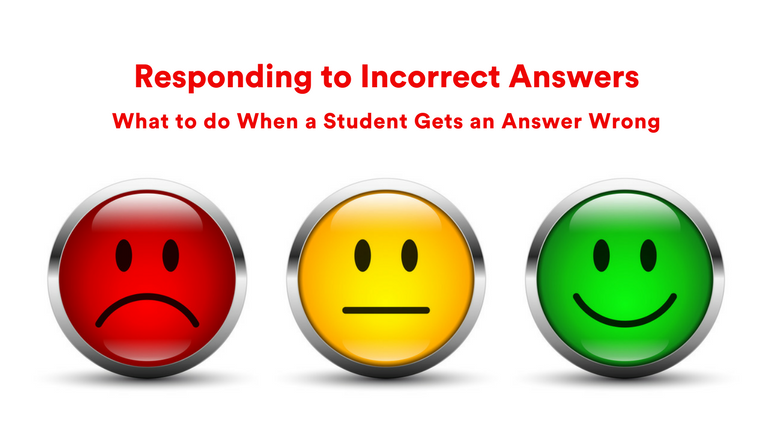
How many decisions do you think you make every day while teaching?
While researchers have found a range of answers to this question, many agree that teachers make around 1,500 educational decisions during an average school day.
Assuming about 6 hours of instructional time, that averages out to 4 decisions per minute!
While some of these decisions can be planned, the majority come in response to the unpredictable nature of students and have to be made in a split second.
It’s no wonder that teachers come home exhausted!
One of the decisions that many find the most troubling? What do you do when a student gets an answer wrong?
This is bound to happen dozens of times per day and yet there isn’t one obvious response that comes to mind.
At the end of the day, the answer to this question depends on a number of factors.
Was the answer given verbally or in writing?
How was the question posed?
Was the student working independently, with a partner, or in a group?
As a general rule of thumb, stick with the student.
Wrong answers in front of the whole class can be awkward and one’s instinct can be to move on as quickly as possible, calling on another student.
This move can be damaging to student self-esteem and classroom culture. Instead, do whatever you can to stick with a student until he or she gets it right.
The decisions that need to be made are concerning what are the appropriate scaffolds to provide that student in that moment to help him get to the right answer. And all while still keeping the rest of the class engaged and productively working.
Read on for some tips and and tools to consider using when you find yourself confronted with these decisions.
Ask for Justification
When you hear a wrong answer, don’t change your face or body language to show it is wrong. Instead, ask the student for a justification or evidence to support her answer.
Doing so serves several purposes. One, it challenges the student (and the rest of the class) to think about how she got this answer.
Secondly, it will help you gather more information about where the breakdown in understanding occured.
Finally, students will frequently find that in trying to support their incorrect answer that something isn’t right – setting them on the path to finding the correct response.
Team Re-Group
If a student answers a question wrong in front of the class, one option is to give ALL students 30 seconds to check back with their group or partner to rethink their answers.
Be sure to tell students that they need to be able to provide the correct answer and support it with evidence or reasoning.
During this time, you can decide if you need to follow up with the original student who got the question wrong to either provide more support or clarify misunderstanding before calling on him or her again.
Enlist Student Support
Sometimes when students get a question wrong, there may have been a misunderstanding about the question itself.
In response to a wrong answer, ask for a student volunteer to restate the question in his own words.
Oftentimes hearing the question a different way and having a bit more think time will be enough for the original student to get to the right answer.
Be Proactive
The following three tips are actually pre-emptive decisions you can make to help avoid wrong answers in the first place.
Be proactive about the teaching moves you use that can help students get to the right answer in lower-stakes environments than sharing in front of the whole class.
Having students solve problems on whiteboards is a great way to see who has and hasn’t mastered a skill.
Or, have students “turn and talk” with a partner about their answer before they share it out whole group. This is also likely to get more hands up to share out since they’ve had a chance to practice their response.
Create a Culture of Error
It’s important that from day one of class you create a culture where mistakes are not only ok, but they are an important part of the learning process.
Don’t be afraid to admit your own errors in front of students!
Set incredibly clear expectations that it is never acceptable to laugh or respond to incorrect answers from others and have students think about why this matters.
By creating a safe space to make mistakes, students will be more likely to participate and take risks.
Make Questions More Challenging
It might seem counterintuitive, but by making questions more challenging, you create a space where most students won’t get the answer 100% right the first time.
With more complex questions, students will come to accept that solving a problem is a process instead of something that happens instantaneously.
The result is that students will be more resilient and accepting of the fact that making mistakes and learning from them is merely part of the process.
What other techniques do you use to respond to incorrect answers in your classroom? Share your ideas in the comments below!



Leave a Reply